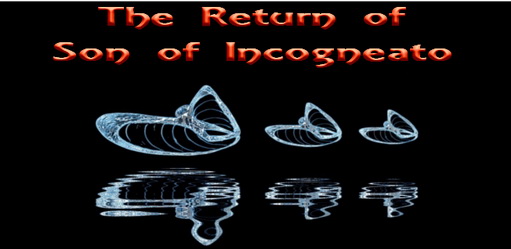
1) The first step
Why do people paint? I’m not sure, but often it’s just something that you have to do. Images dart about, coagulate in the mind and they want to come out. I go and chew on ideas for a bit. And then I’ll suddenly stumble over something: a scene, a photo, a National Geographic article - the illustrator’s secret friend - and suddenly a new painting is on its way.
I was fascinated by this rock formation from Germany. I t looked like an organic castle . . . hmmm . . . a castle hewn right into the mountain . . .

2) The rough sketch
I often tell people that I am lousy at drawing. Here's the proof.
Before starting on the actual painting I make a very rough sketch to arrange the composition. I also experiment with colour combinations.
The tricky thing with watercolour is that you pretty much have to plan everything; it is an unforgiving medium – like diamonds, mistakes are usually forever.

3) The pencil drawing
This is the difficult part for me, especially as one faces a large blank sheet of paper. The emptiness can be imposing. Where to start? You have to be careful with the paper; heavy eraser use affects the surface and can cause problems later when watercolour is applied. Also the pencil is easily smeared when you move your hand around. Placement of a small clean sheet of paper under your hand helps prevent smudging.
Once the drawing finally gets under way it can seem as if it draws itself. Things appear under your fingers of their own volition. The piece assumes its own kind of logic and history. After a while you realize that you are only seeing/creating a part of something bigger. There are things happening outside the picture that give it meaning.
We are on our way . . .

4) Laying in color
Now the real fun begins. The painstaking process of drawing is finally finished and you are rewarded for your efforts by being allowed to smear colour all over your drawing. There are often several semi-transparent washes applied before this point. Washes give subtle undertones and set the atmosphere for the painting. You can see a light yellow wash across the crowns of the trees - this should give them a warm, living tone.

5) The picture begins to emerge

6) The finished painting - Castellum (1997) watercolor/pencil/ink on paper
The end. A piece of coloured paper measuring 34 x 45 centimetres. Slap a quasi-intellectual Latin name on it for good measure.
Post-painting depression usually sets in about a day or two after you have cleaned your last brush. The cure? Another painting . . .











3 have said their bit, now it's your turn:
This was great fun for me to see unfolding!
I am not sure how my recent zeal for sketching and painting ignited, but I have lots to learn, and seeing your steps is wonderful for me.
The outcome astonishing plus wonderfully creative!
I enjoy seeing how you do it! I have a very similar process to make the imagination bloom...
Awesome, I always like to see step-by-steps of cool fantasy work!
Post a Comment